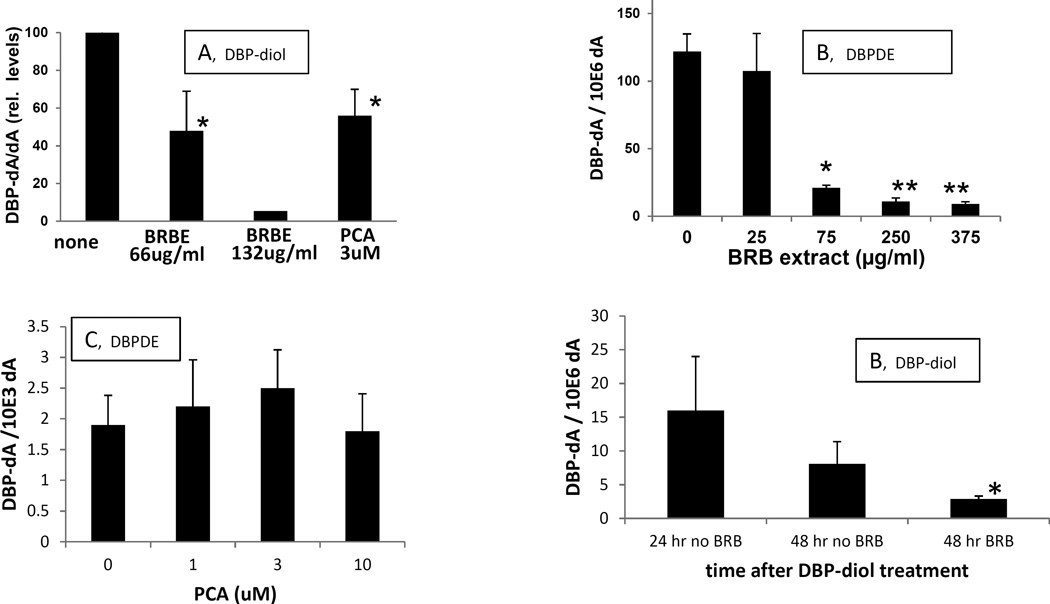Fig. 4.
A. Effects of BRBE and PCA on DNA adducts produced by DBP-diol in OFB.
DBP-diol, 0.5 uM.
B. Effect of BRBE on DNA adducts produced by DBPDE in OFB.
DBPDE, 70 nM. For the highest dose of DBPDE there was only one sample that yielded sufficient DNA for adduct analysis; the single result is plotted in the figure.
C. Effect of PCA on DNA adducts produced by DBPDE in OFB.
DBPDE, 140 nM. *, P < 0.05; **, P <0.01 in a one – tailed t-test vs control (no DBP metabolite).
a. Experiments using BRBE and PCA in the presence of DBP-diol were performed on different days and are expressed as a percentage of the control (DBP-alone).
D. Effect of BRBE on removal of DBPDE-dA adducts. OFB were treated with 1.5 uM DBP-diol. One day later DNA adducts were analyzed in one group and 75 ug/ml BRBE was added to a second group of cells; while a third group of DBP-diol-treated cells was incubated without further additions. One day later (48 hr after addition of DBP-diol) adducts were analyzed in DBP-diol treated OFB, with and without BRBE. *, P ≤ 0.05 in a Mann-Whitny U-test, and 0.055 in a t-test with unequal variances, vs. 48 hr group with no BRBE.

